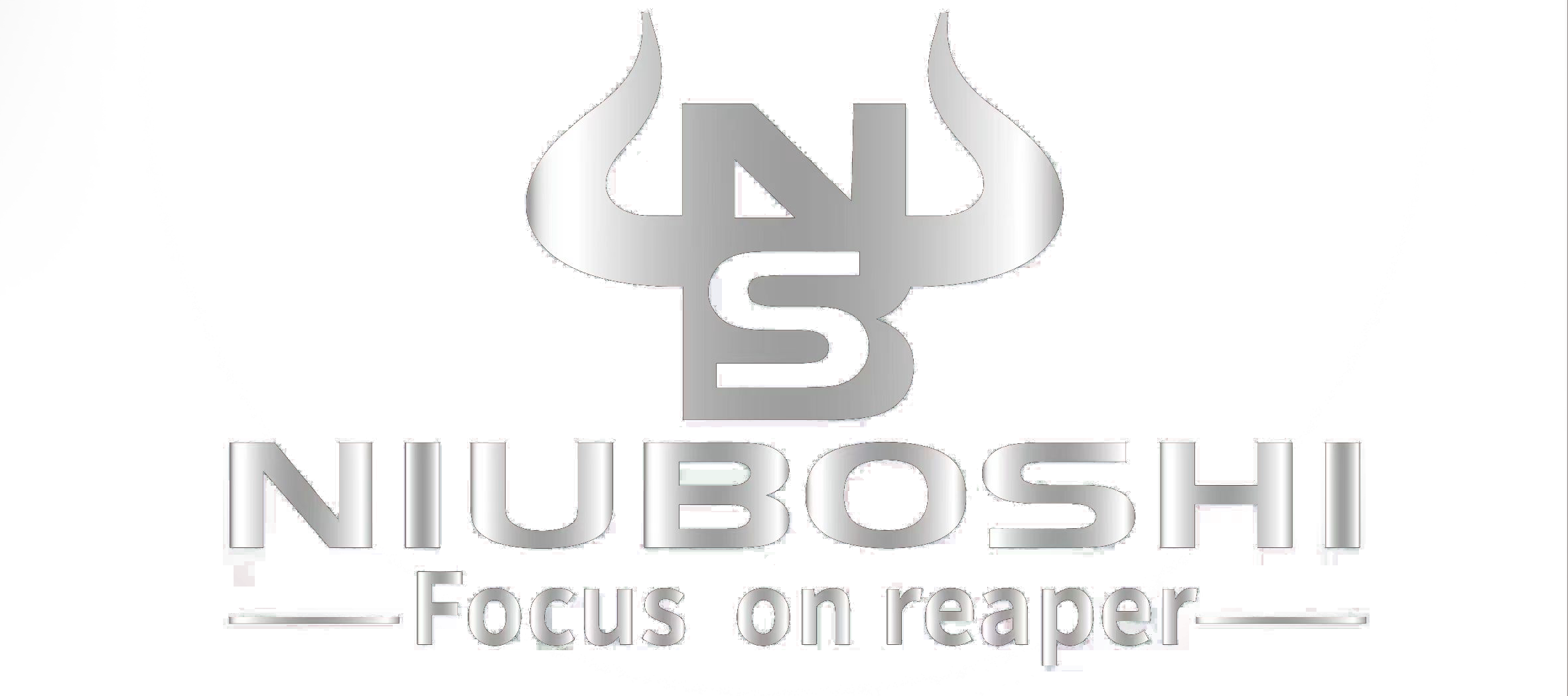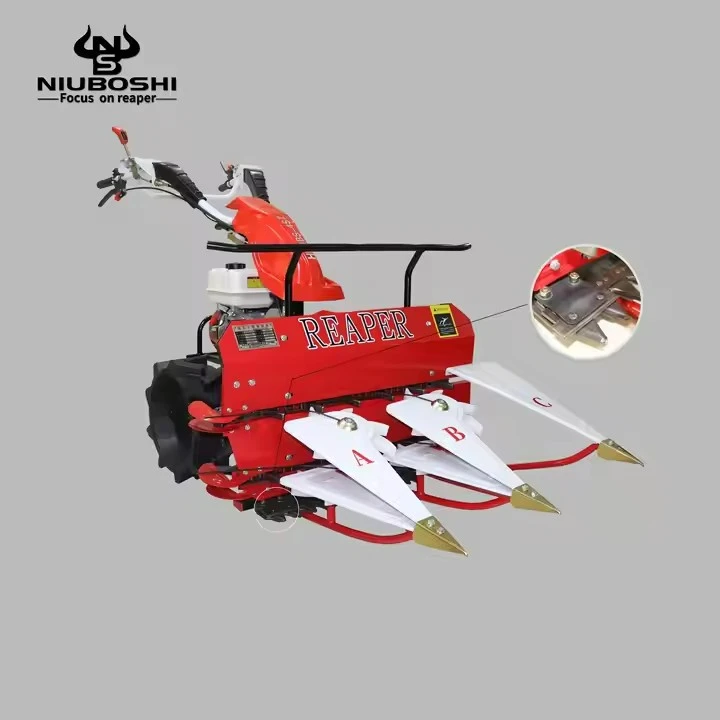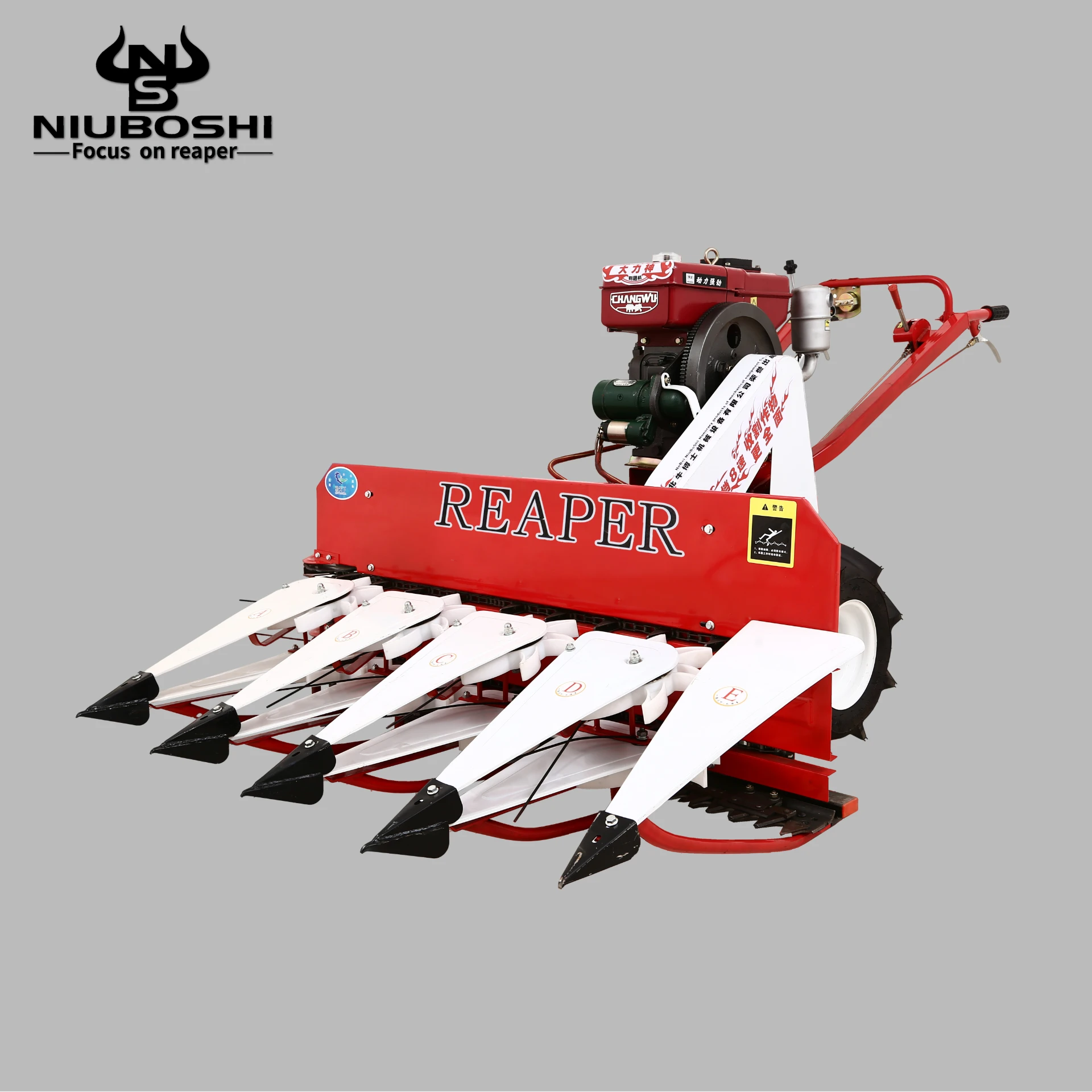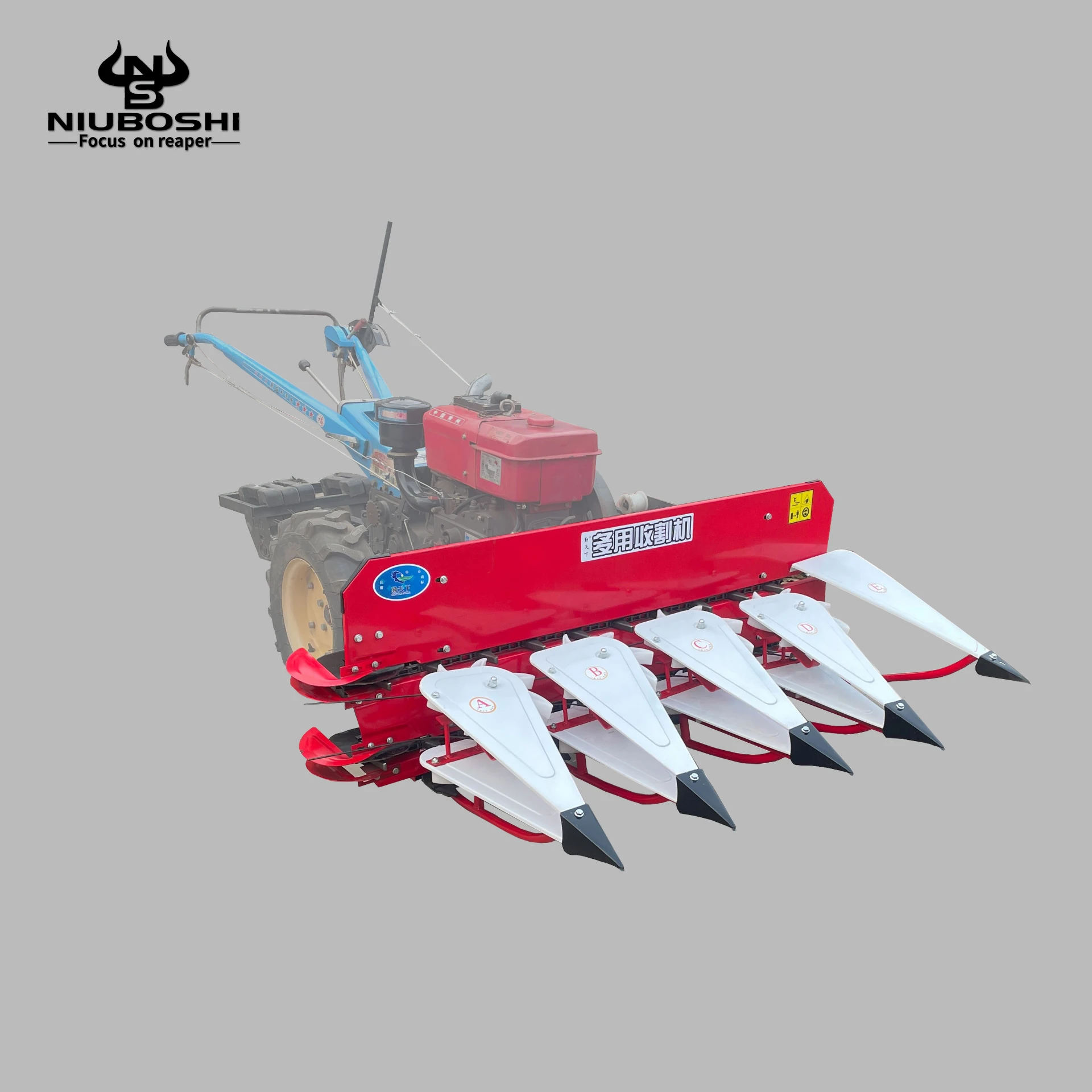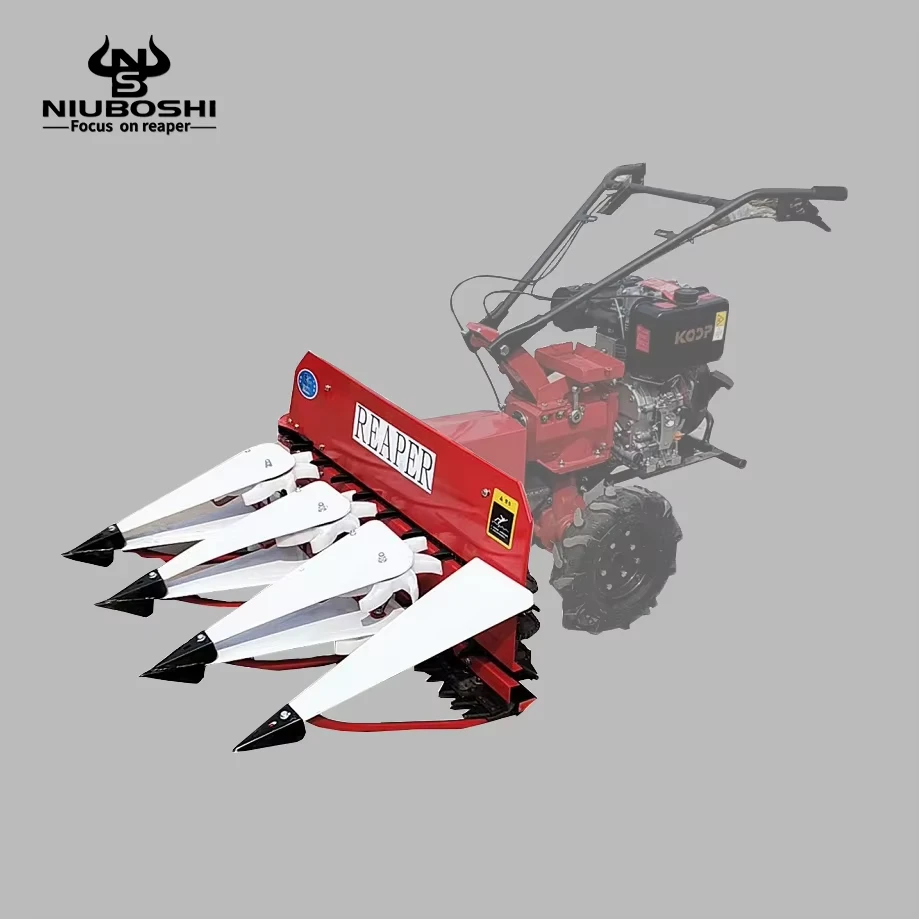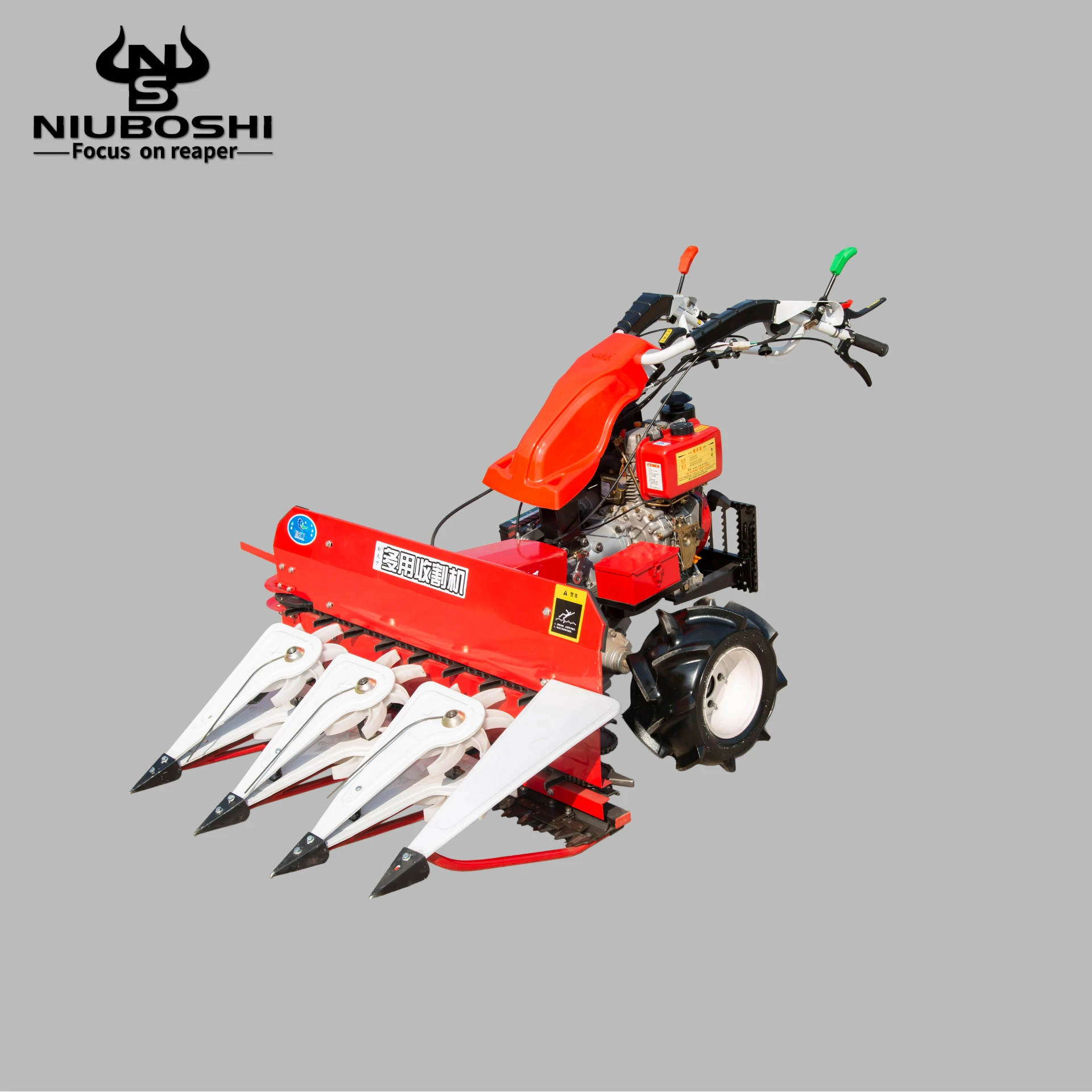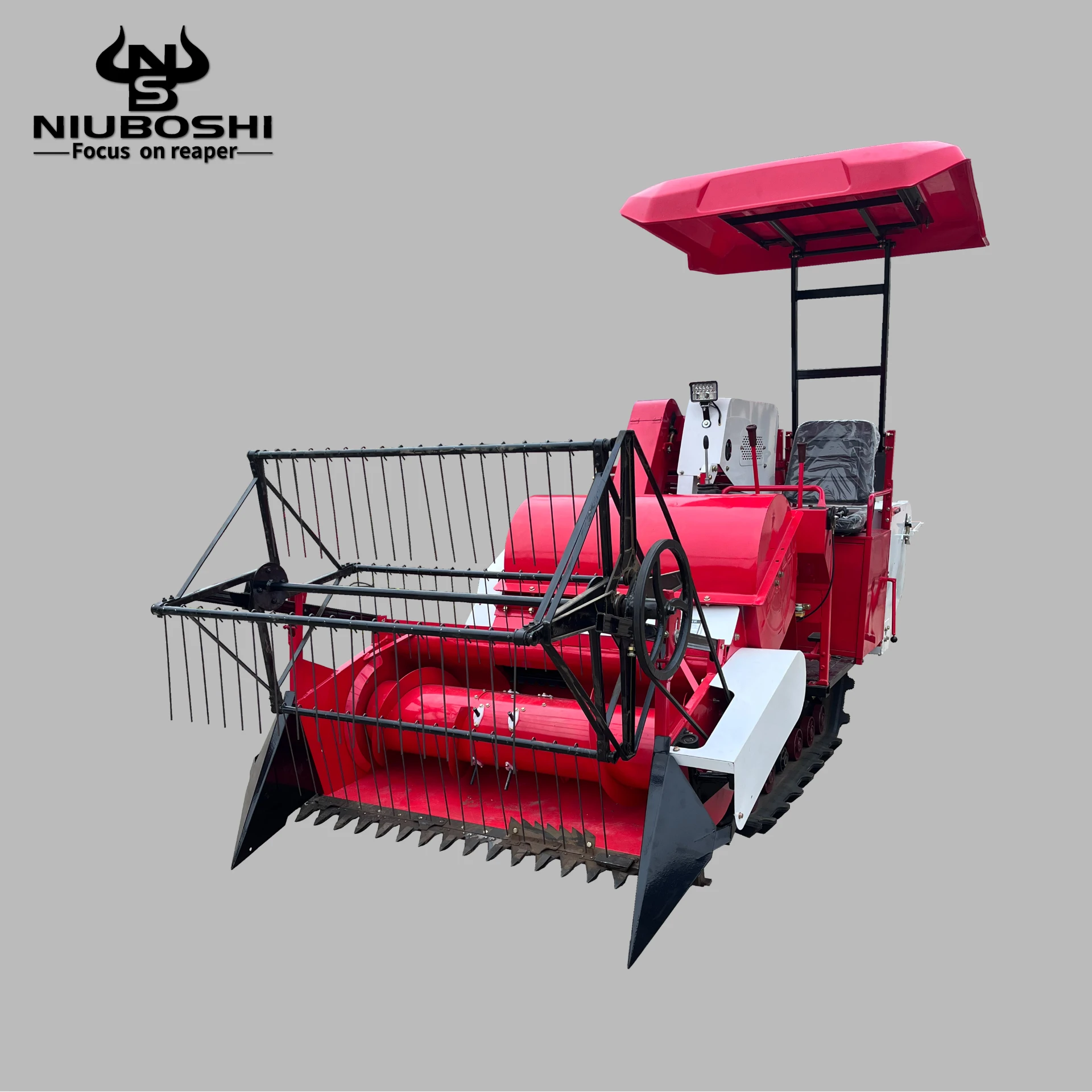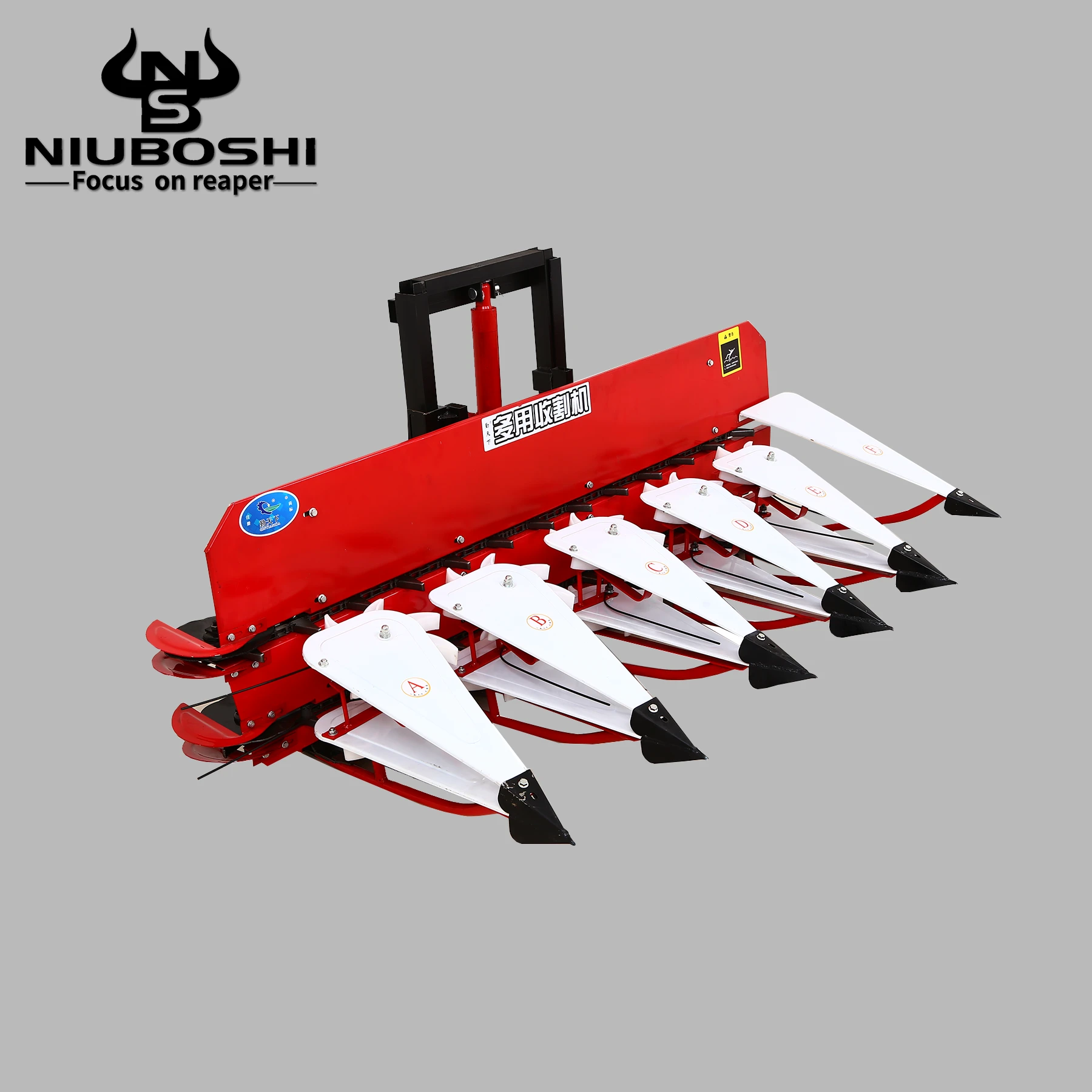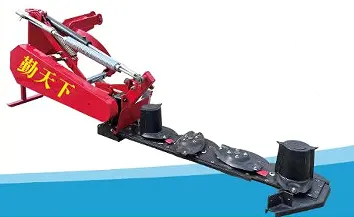Industry Trends: The Shift Towards Mechanized and Efficient Harvesting
The global agricultural sector is undergoing a significant transformation. With a growing global population and increasing labor costs, the demand for efficient, reliable, and cost-effective harvesting solutions has never been higher. The market for agricultural machinery, particularly for harvesting, is projected to grow substantially. According to a report by a leading market research firm, the agricultural equipment market is expected to reach over USD 250 billion by 2027, with harvesters being a key segment.
In this landscape, the reaper binder has emerged as a critical tool. Unlike large, expensive combine harvesters, a reaper binder, especially a versatile model like a walking tractor mounted reaper head, offers an affordable and highly efficient solution. It excels in harvesting grain crops like wheat, rice, barley, and oats, as well as other crops such as lavender, reeds, and medicinal herbs. This technology bridges the gap between manual labor and full-scale industrial harvesting, making it ideal for small to medium-sized farms, challenging terrains, and specialized crop cultivation.
The key trends driving the adoption of the reaper machine include:
- Focus on Small Farm Mechanization: Governments and organizations worldwide are promoting mechanization for smallholder farmers to boost food security and rural economies. The mini reaper is a perfect fit for this initiative.
- Crop Diversification: As farmers diversify into niche crops like herbs and ornamental grasses, the need for a versatile grass reaper machine that can handle various plant types is increasing.
- Labor Shortage and Costs: The rising cost and scarcity of manual labor during peak harvesting seasons make machinery like the reaper harvester an economic necessity.
- Technological Integration: Modern reapers incorporate improved materials, more efficient cutting mechanisms, and better power transmission, leading to higher reliability and lower operational costs.
Technical Deep Dive: The Walking Tractor Mounted Reaper Head
To understand the value of a modern reaper binder, let's analyze the technical specifications of a leading product: the Walking Tractor Mounted Reaper Head. This machine is a prime example of efficient design and robust engineering, tailored for maximum productivity.
Key Technical Specifications
| Parameter | Specification | Impact on Performance (Expertise) |
|---|---|---|
| Product Name | Walking Tractor Mounted Reaper Head | Indicates it's an attachment, offering versatility and cost savings by utilizing an existing power source (walking tractor). |
| Cutting Width | 120 cm / 140 cm / 160 cm | A wider cutting width directly translates to faster harvesting. The options allow customization based on farm size and crop density. |
| Stubble Height | ≥ 5 cm (Adjustable) | Crucial for crop regeneration and field cleanliness. Adjustability is key for different crops and ground conditions. |
| Productivity | 0.2 - 0.33 hectares/hour | This metric (equivalent to 2000-3300 m²/hr) demonstrates a massive efficiency gain over manual harvesting, often by a factor of 20-30. |
| Power Requirement | 8-18 HP Walking Tractor | Specifies the compatible power source. This range covers the most common walking tractors, ensuring broad compatibility. Power is transmitted via Power Take-Off (PTO). |
| Binding Method | Automatic Mechanical Binding (Hemp Rope) | The "binder" function is what sets it apart. Automatic binding saves a second labor-intensive step, dropping neatly tied bundles for easy collection. |
| Weight | Approx. 120 kg | A balanced weight ensures stability during operation without overly burdening the walking tractor's engine and transmission. |
| Blade Material | 65Mn Forged Steel | Manganese steel (65Mn) is known for its high hardness, wear resistance, and toughness, ensuring a long-lasting sharp edge for clean reaper cutting. |
Performance Visualization
Data visualization helps in understanding the practical benefits of the Walking Tractor Mounted Reaper Head. The following charts illustrate its capabilities based on typical performance data.
Efficiency Comparison (Hectares/Hour)
Suitable Crop Distribution
From Raw Steel to Field Champion: The Manufacturing Process of a Reaper Binder
The reliability and longevity of a reaper machine are not accidental; they are the result of a meticulous manufacturing process that adheres to strict quality standards. Our commitment to excellence is reflected in every stage, from material selection to final inspection, ensuring compliance with standards like ISO 9001:2015.
Manufacturing Flowchart
(High-Tensile Steel, 65Mn Alloy)
(Shaping Core Components)
(Precision Engineering)
(Hardening Blades & Gears)
(Skilled Technicians)
(Powder Coating)
(ISO/ANSI Standards)
(Secure for Transit)
Key Process Details:
- Material Science: We primarily use high-tensile carbon steel for the frame and critical structural parts. For the cutting blades, which perform the essential reaper cutting action, we use 65Mn Manganese Steel. This alloy is chosen for its superior wear resistance and ability to hold a sharp edge, which is a key tenet of ANSI B175.2 cutting equipment standards.
- Forging and CNC Machining: Key transmission components like gears and shafts are hot-forged to align the grain structure of the metal, dramatically increasing their strength and fatigue resistance compared to simple cast parts. Subsequently, these parts are finished using Computer Numerical Control (CNC) machines, which guarantee dimensional accuracy to within micrometers. This precision ensures smooth power transmission and reduces wear and tear.
- Quality & Testing Standards: Every reaper binder we manufacture is subject to a rigorous quality assurance protocol. This includes material composition testing, dimensional checks post-machining, and a full functional test of the assembled unit. Our processes are certified under ISO 9001:2015, a testament to our commitment to consistent quality and customer satisfaction.
- Durability & Lifespan: With proper maintenance, our reaper heads are designed for a service life of over 1,500 operational hours. The powder-coated finish provides excellent protection against humidity, UV radiation, and chemical exposure, preventing corrosion and extending the machine's aesthetic and functional life.
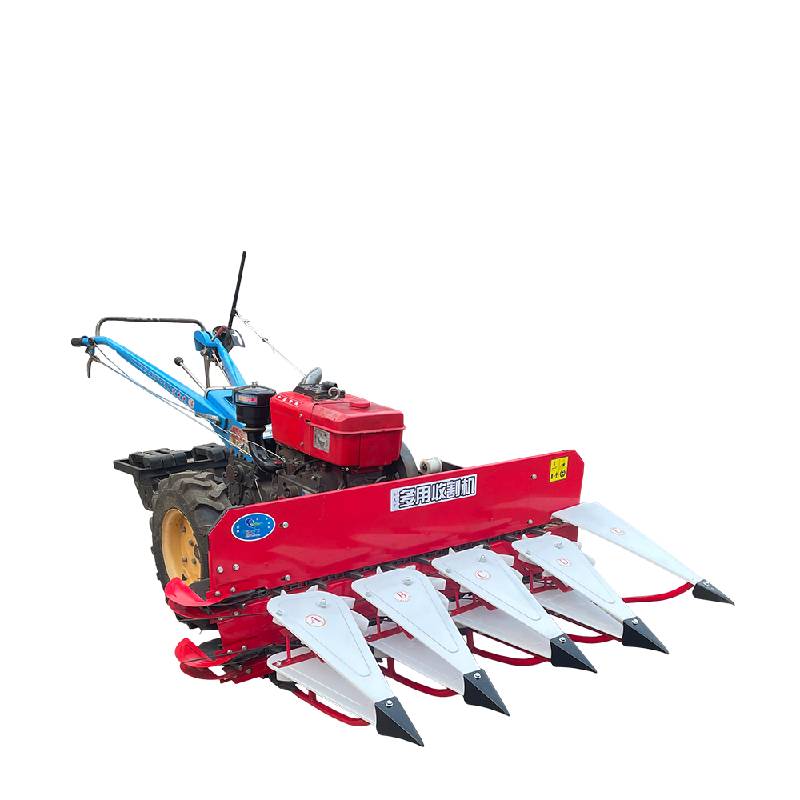
Versatile Applications: More Than Just a Grain Harvester
While the reaper harvester is a champion in grain fields, its applications extend far beyond. The robust design and adjustable features make the Walking Tractor Mounted Reaper Head a multi-purpose tool for modern agriculture and land management.
Primary Applications:
- Cereal Grains: The most common use is for harvesting wheat, rice, barley, and oats. The machine's ability to cut and bundle in one pass is invaluable.
- Herb and Flower Farming: Commercial growers of lavender, chamomile, and other medicinal herbs find the precise reaper cutting and bundling perfect for preserving the quality of the harvest.
- Forage and Fodder: It serves as an excellent grass reaper machine for cutting alfalfa, clover, and other forage crops for animal feed.
- Specialty Crops: The machine is adept at harvesting reeds for thatching, flax for linen production, and even some types of bamboo.
Technical Advantages in Application:
- Energy Efficiency: By mounting on an existing walking tractor, it leverages a power source already present on the farm, eliminating the need for a dedicated engine and reducing overall fuel consumption.
- Maneuverability: Its compact size, characteristic of a mini reaper, allows it to operate in small, terraced, or irregularly shaped fields where large combine harvesters cannot go.
- Cost-Effectiveness: The initial investment is a fraction of a self-propelled combine harvester, and the operational and maintenance costs are significantly lower, providing a rapid return on investment.
- Reduced Crop Loss: The precise cutting and immediate bundling mechanism minimizes shattering and grain loss compared to manual methods or less advanced machinery.
Manufacturer & Product Comparison: Making an Informed Choice
Choosing the right reaper binder manufacturer is as important as choosing the machine itself. A reputable manufacturer offers not just a product, but also reliability, support, and peace of mind. Here’s how our "NiuBoshi" branded reaper heads stand out from generic or lower-quality alternatives.
Manufacturer Comparison: NiuBoshi vs. Generic Competitors
| Feature | NiuBoshi (HBNIUOSHI) | Generic Competitors |
|---|---|---|
| Manufacturing Experience | Over 10 years of specialized experience in agricultural machinery. | Often new entrants or general traders with limited specialized knowledge. |
| Material Quality | Verified 65Mn Forged Steel for blades, high-grade structural steel. | Often use lower-grade cast iron or unverified steel alloys, prone to wear. |
| Quality Certification | ISO 9001:2015 certified processes. | Lack of internationally recognized certifications. |
| After-Sales Support | Comprehensive warranty, readily available spare parts, and technical support. | Limited or no support, difficulty in sourcing compatible spare parts. |
| Customer Feedback | Consistently positive reviews highlighting durability and performance. | Mixed reviews, frequent complaints about breakdowns and poor performance. |
When you invest in our reaper binder, you are investing in a legacy of quality and a partnership dedicated to your farm's success.
Tailored Solutions: Customization & Application Case Studies
We understand that every farm is unique. That's why we offer customization options and have a wealth of experience in deploying our reaper machine in diverse scenarios.
Customization Options
Beyond the standard cutting widths, we can work with clients to provide tailored solutions, including:
- Specialized Mounting Brackets: To ensure compatibility with a wider range of non-standard walking tractors or power tillers.
- Crop-Specific Adjustments: Minor modifications to the reel speed or binder mechanism to optimize performance for delicate crops like lavender or bulky ones like reeds.
- Alternative Binding Materials: While hemp rope is standard, we can explore adjustments for other biodegradable twines based on local availability and preference.
Application Case Studies (Experience)
Case Study 1: Wheat Farming in Punjab, India
Client: A cooperative of small-scale farmers with plots ranging from 1 to 3 hectares.
Challenge: Extreme labor shortages during the wheat harvest season led to delays and significant crop loss from shattering.
Solution: Deployed ten Walking Tractor Mounted Reaper Heads (140cm model). Farmers were trained on operation and basic maintenance.
Outcome: The cooperative reported a 40% reduction in harvesting costs and a 70% reduction in harvesting time. Crop loss was minimized, and the neatly tied bundles made collection and transport significantly easier. The project was hailed as a model for small-farm mechanization in the region.
Case Study 2: Lavender Farm in Provence, France
Client: An organic lavender farm supplying essential oil producers.
Challenge: Manual harvesting was time-consuming and led to inconsistent cutting heights, affecting plant health and subsequent yields. Mechanical harvesters were too harsh on the delicate flowers.
Solution: A customized reaper harvester with a slower reel speed and a finely-tuned cutting height mechanism.
Outcome: The client achieved a perfectly uniform cut, promoting healthy plant regrowth. Harvesting efficiency increased five-fold, allowing them to harvest the entire crop at its peak oil content. The gentle bundling mechanism preserved the integrity of the flowers, improving the quality of the essential oil produced.
Frequently Asked Questions (FAQ) - Trustworthiness & Expertise
We've compiled answers to some of the most common technical questions to help you understand our products better.
1. What specific material are the cutting blades made from, and why is it superior?
Our blades are crafted from 65Mn Forged Steel. This is a high-carbon manganese spring steel. The "forging" process aligns the metal's internal grain, making it incredibly tough. The manganese content significantly increases its hardenability and wear resistance. This means the blades stay sharper for longer and are less likely to chip or break when hitting small stones, unlike cheaper cast iron or standard steel blades.
2. What is the standard cutting height, and how is it adjusted?
The standard minimum stubble height is 5 cm. It is adjustable via the skid plates and the mounting linkage to the walking tractor. By raising or lowering the entire reaper head relative to the ground, you can achieve different cutting heights suitable for various crops and field conditions.
3. What is the difference between a reaper binder and a simple reaper machine?
A simple reaper machine only performs the cutting action, leaving the crop in a windrow on the ground. A reaper binder, like our model, has an integrated mechanical binding mechanism. After cutting, it gathers the stalks and automatically ties them into a neat bundle (sheaf) with twine, which is then dropped to the side. This saves an entire step of manual labor, making it far more efficient.
4. What type of walking tractor is compatible with the reaper head?
Our reaper head is designed for compatibility with most belt-driven or Power Take-Off (PTO) shaft-driven walking tractors in the 8-18 HP range. We provide a standard mounting interface, but it's crucial to confirm the specific model of your tractor with our technical team to ensure a perfect fit.
5. What is the recommended maintenance schedule?
Daily: Clean the machine of plant debris and dust, check blade sharpness, and inspect for loose nuts/bolts. Weekly: Grease all lubrication points (zerk fittings) and check the tension of belts and chains. Annually: Change the gearbox oil and perform a thorough inspection of all wear parts (blades, bearings, binder components). A detailed schedule is provided in the user manual.
6. How does the automatic binding mechanism work?
The mechanism is a marvel of mechanical engineering. As the cut stalks are gathered, they accumulate on a platform. Once a sufficient amount is collected, it trips a sensor (mechanical trigger). This engages a clutch that activates the binder needle and knotter system. The needle wraps twine around the bundle, the knotter forms a secure knot, and a knife cuts the twine. The entire cycle takes just a few seconds.
7. What is the warranty period and what does it cover?
We provide a comprehensive 12-month warranty against manufacturing defects. This covers all non-wear parts, such as the gearbox, frame, and major mechanical components. Wear parts like blades, belts, and twine are not covered but are readily available as spare parts. Our commitment to trustworthiness means we stand by our product's quality.
Our Promise: Delivery, Warranty, and Unwavering Support
Our relationship with you doesn't end after a sale. We are committed to providing a trustworthy and supportive experience throughout the life of your reaper harvester.
- Global Delivery: We have a robust logistics network capable of shipping our products worldwide. Each unit is securely crated to prevent damage during transit. Typical delivery lead time is 15-30 days, depending on the destination.
- Ironclad Warranty: As stated in our FAQ, every machine comes with a 12-month warranty against manufacturing defects, giving you confidence and peace of mind in your purchase.
- Customer & Technical Support: Our team of experienced engineers and customer service professionals is available to answer your questions, provide operational guidance, and help with troubleshooting. We believe in building long-term partnerships with our clients.
- Spare Parts Availability: We guarantee the availability of all spare parts for our models. Whether you need a new set of cutting blades or a component for the binder, we can ship it to you promptly to minimize downtime.
Authoritative References & Further Reading
To further your understanding of small-scale farm mechanization and harvesting technologies, we recommend exploring insights from authoritative agricultural bodies. The principles behind efficient harvesting and the benefits of mechanization are well-documented in academic and industry publications.
As noted in a study on the mechanization of rice farming, "The introduction of reapers significantly reduced labor requirements and post-harvest losses, leading to increased net returns for farmers." This sentiment is echoed across numerous studies and is a core principle of our product design.
For more information, consider these resources:
- Food and Agriculture Organization of the United Nations (FAO) - Sustainable Agricultural Mechanization: https://www.fao.org/sustainable-agricultural-mechanization/en/
- Journal of Agricultural Engineering Research: An academic journal often featuring studies on harvesting equipment efficiency and design.
